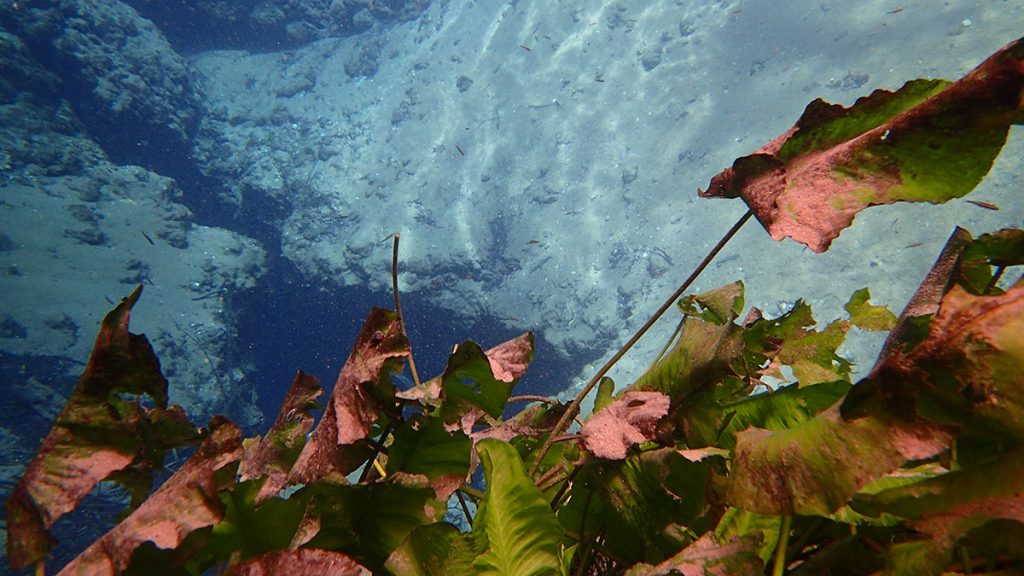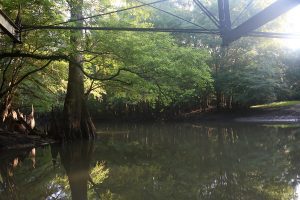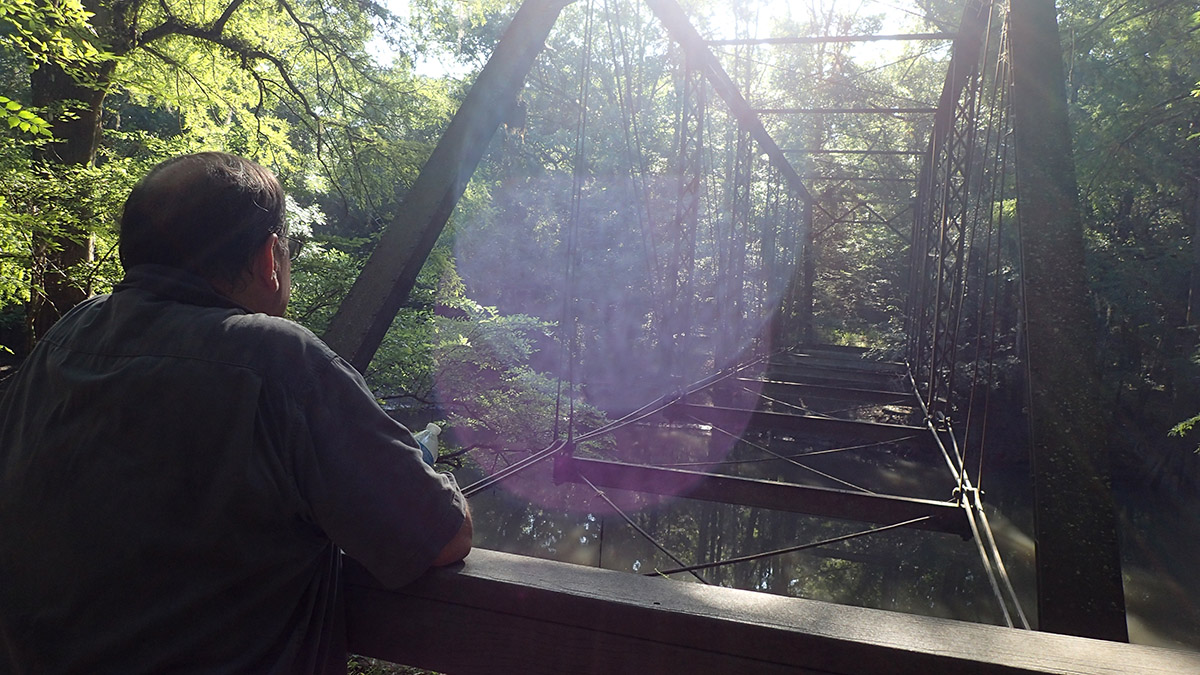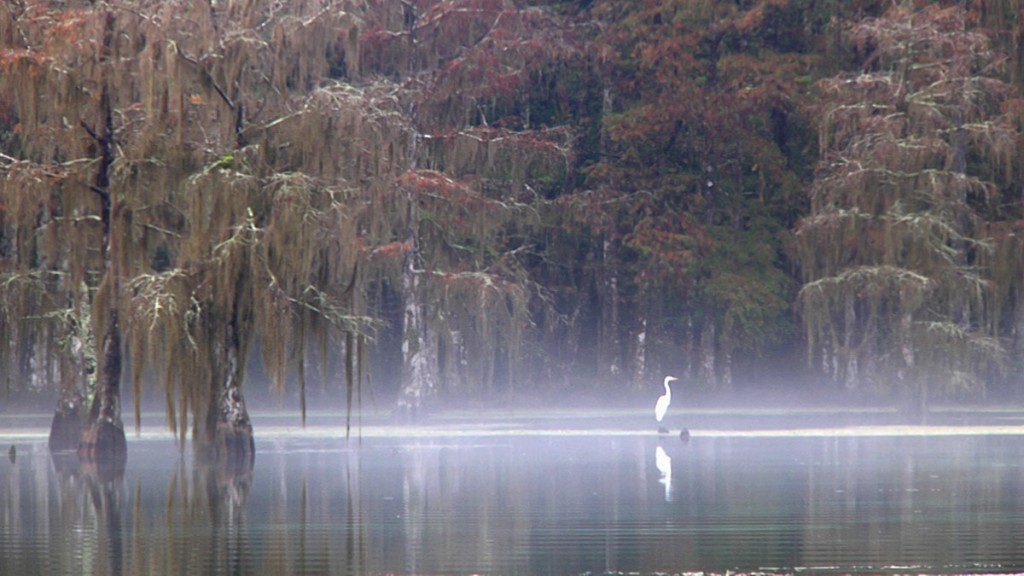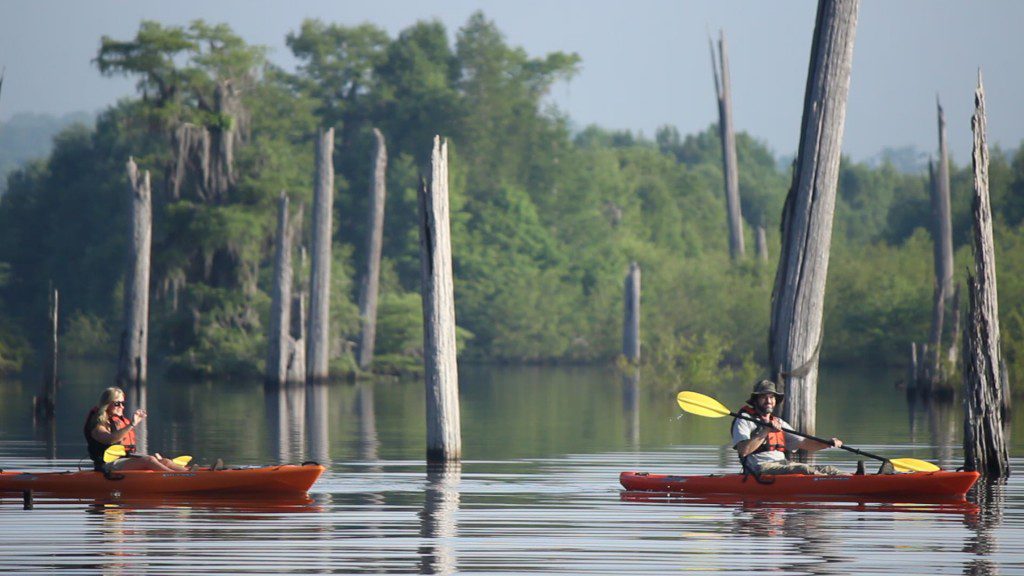November is Paddle sports Month in Florida, and what better way to celebrate than with a trip down the Upper Chipola River? We’ve got a ghost story, some log climbing, and a little inclement weather.
Music for the segment was provided by the Adventures of Annabelle Lyn. Check out their performance on Local Routes from a few weeks back.
Rob Diaz de Villegas WFSU-TV
“Well, you do have dry bags, right?” Tyler Macmillan asks, sitting in his kayak and consulting his phone. We’re almost half an hour into our Upper Chipola River kayak trip, and we’re starting to hear thunder. We have a choice to make- do we paddle back upstream or race ahead?
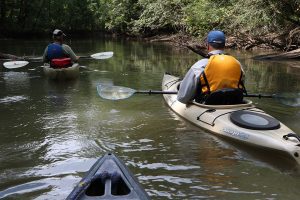 The Upper Chipola River Paddling Trail runs for 4.5 miles, ending at Florida Caverns State Park. This is- what, our fifth, sixth attempt at shooting this video? It was enough for us to brave a moderate chance of rain and make a go of it. We wouldn’t be denied this time! Anyhow, if I could control every aspect of every outdoor trip, it wouldn’t be fair for me to call them adventures.
The Upper Chipola River Paddling Trail runs for 4.5 miles, ending at Florida Caverns State Park. This is- what, our fifth, sixth attempt at shooting this video? It was enough for us to brave a moderate chance of rain and make a go of it. We wouldn’t be denied this time! Anyhow, if I could control every aspect of every outdoor trip, it wouldn’t be fair for me to call them adventures.
We decide to charge onward. Rain and high waters had kept us from our previously scheduled shoot dates here; and that may have something to do with the downed trees that start blocking our way. Instead of a mad dash to the safety of the state park, we get caught.
Liz Sparks is the Paddling Trails Coordinator for DEP’s Office of Greenways and Trails, and my canoe chauffeur in the video above. Since that shoot day, Liz reports that Jackson County has cleared the trail.
After that rain stops, we navigate a few more snags. Eventually, we reach one of the draws of this paddling trail: Baltzell Springs. It’s a great way to cool of after dragging that tank of a canoe through the floodplain forest a few times.
The Chipola River is fed by over 60 springs. It also goes underground for a few miles at Florida Caverns State Park. It’s a great river on which to learn about the karst geology in our area; after the river emerges you can paddle by some impressive limestone outcroppings.
The Haunted Bridge of the Upper Chipola River
The trail guide for the Upper Chipola tells you that you can paddle upstream for 1.5 miles from the start of the trail to visit Bellamy Bridge. You can also access the bridge by hiking a half a mile through the floodplain forest. As Dale Cox explains in the video, people often visit the bridge late into the night. They want to catch glimpse of the ghost of Elizabeth Bellamy.
Dale meets us at the bridge to tell the story of Elizabeth’s tragic death and undying love for her husband. Dale is a local historian and documentarian, producing films on local history for Two Egg TV. He is also the author of several books on area history.
Dale Cox hails from the town of Two Egg, which is not far from Marianna. After a career as a journalist, he returned home to pursue a lifelong passion for area history.
“My background was in anthropology and history,” Dale tells me. “And when I retired eight years ago and moved back to the area, I just picked up what was my original vocation, and hobby as a kid. I started researching the area, and learning more about it.”
Dale included the Bellamy Bridge ghost story in his book of ghost stories, and in Two Egg, Florida. That latter book is a good way to get to know some local tales from around the Marianna area before you plan your paddle trip. He also included a couple of stories taking place along the Apalachicola River.
Dale is currently editing a documentary on the Apalachicola’s Negro Fort/ Fort Gadsden.
As for that ghost, it helps pay for the trail to the bridge. While the property belongs to the Northwest Florida Water Management District, The Friends of Bellamy Bridge raise funds for trail maintenance. Their biggest fundraiser? Pre-Halloween ghost walks to Bellamy Bridge.
Kayak and Canoe Trips along the Chipola River
Our trip shows us just a 4.5 mile sliver of the 89 mile Chipola River. It’s our third paddle trip on this basin, and we haven’t even tackled the 51 mile Chipola River Paddling Trail. It’s a river with many personalities, and more than a few trip possibilities. We’ll list the options from north to south:
The Chipola River Paddling Trail. The Upper Chipola goes underground at Florida Caverns State Park. This larger paddling trail begins where it re-emerges by Yancey Bridge. Its big draws are the limestone bluffs and caves along it, and the springs that feed it. While it’s a longer trail, there aren’t enough places to camp to plan a multi-day trip down the length of the trail.
Last year around this time, we enjoyed a foggy morning full of fall foliage on Merritt’s Mill Pond. The water here is crystal clear, fed by six or seven springs. The largest is Jackson Blue Spring, a first magnitude spring and an international attraction for cave divers. Merritt’s Mill Pond is an easy to paddle, scenic 4 mile pond. The Mill Pond drains into a creek, which feeds the Chipola.
The Dead Lakes are possibly the most visually unique waterways in our area. In the 1800s, the Apalachicola River pushed sand into the mouth of the Chipola, backing its water up. This section of the river is wider as a result, and littered with the corpses of drowned trees. Wewahitchka is located between the Dead Lakes and the Apalachicola River. The land between the two rivers is full of tupelo swamps, making Wewahitcka the tupelo honey capital of the world.
South of the Dead Lakes, the Chipola meets the Apalachicola. This puts you in the Apalachicola River delta, which itself offers a multitude of possible paddle trips.
Exploring the Chipola River Floodplain
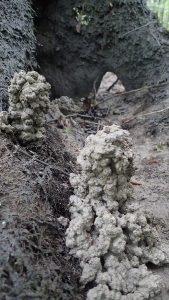
These dirt mounds are crawfish colonies located in the flood plain of the Chipola River. Crawfish play an important role in river ecology, feeding fish and bird species (and humans, too!).
Tyler Macmillan works with the Northwest Florida Water Management District (NWFWMD). Doesn’t he look happy as we’re about to get in the water? He’s with us to talk about the land around the river. The District owns much of this floodplain forest, including that around Bellamy Bridge.
Thanks to the weather and fallen trees, we’re spending some time in the floodplain with Tyler. “The Water Management District protects properties like this to protect the water resources.” Tyler tells us. Healthy habitat along the river protects water quality as well as the species that make use of the river.
Also, as Tyler tells us, it keeps people from building houses on the floodplain. Houses so close to a river risk being flooded.
Of course, there is a recreational benefit to this land along the water. Here, you can hike, birdwatch, or hunt. There is even a primitive campsite by Cristoff Landing, which Tyler says is mostly used during hunting season.
To me, the greatest benefit is felt sitting in a canoe or kayak. As Dale Cox says in the video, “You are paddling down Old Florida when you paddle the Upper Chipola.” You can go long stretches without seeing anything manmade. It might be 2016… or 1916… or 1816…

